Ever Wondered How We Make Metal Parts Last? Let's Talk Surface Treatment!
For over 30 years, I've been immersed in the world of metal manufacturing, and if there's one thing I've learned, it's that what's on the surface matters just as much as what's inside. We can craft the most precisely engineered metal components, but without the right surface treatment, they’re vulnerable. Think about it – rust, wear, tear – these are the enemies of longevity and performance. That’s where surface treatment, specifically electroplating and galvanizing, comes into play.

Over the years, I’ve seen firsthand how crucial these processes are. From tiny screws to massive automotive parts, surface treatment is the unsung hero extending the life and enhancing the properties of countless metal products we rely on every day. Let's dive into why this is so important and how it's done.
Why is Electroplating So Universally Applied?
Honestly, look around you. Electroplating is everywhere. Think about the shiny coins in your pocket, the gleaming trim on cars, the components inside your computer, even the buttons on your clothes! It’s a process that’s become so fundamental because it’s incredibly versatile and effective.
Electroplating, in its simplest form, is about using an electric current to coat a metal object with a thin layer of another metal. Why do we do this? For a whole host of reasons:
- Boosting Durability: Want to make a part last longer? Electroplating is your answer. It creates a protective barrier against corrosion, wear, and tear, significantly extending the lifespan of metal components.
- Adding a Touch of Beauty: Let's face it, sometimes we need things to look good. Electroplating can dramatically improve the aesthetic appeal of metal parts, giving them a polished, decorative finish. Think about the difference between raw steel and chrome plating – it's night and day!
- Enhancing Functionality: Beyond just looks and longevity, electroplating can alter the mechanical properties of a metal. It can increase hardness, improve conductivity (essential in electronics), or even change the surface texture for better performance in specific applications.
- Protecting Sensitive Electronics: In the world of electronics, environmental factors can be devastating. Electroplating provides a shield against moisture, oxidation, and other damaging elements, safeguarding delicate electronic components.
From fasteners like bolts, nuts, and screws, to larger components for cars, bikes, and even everyday items like stationery and fishing gear, electroplating touches almost every industry. It’s a cornerstone of modern manufacturing for good reason – it’s a proven, reliable, and incredibly effective way to enhance metal products.
Galvanizing: The Ultimate Weapon Against Rust?
If corrosion is the enemy, then galvanizing is definitely one of our strongest weapons. In my experience, when people talk about protecting steel from rust, galvanizing is often the first method that comes to mind – and for good reason.
Galvanizing is specifically focused on protecting steel and iron from corrosion. It’s a process where we coat the metal with a layer of zinc. Why zinc? Because zinc is special when it comes to steel. It's more electrochemically active than steel, which means it will corrode before the steel does. Think of it as a sacrificial shield.
Here’s how it works: even if the zinc coating is scratched or damaged, the zinc around the exposed steel will continue to corrode preferentially, protecting the underlying steel from rusting. This is called sacrificial protection, and it’s what makes galvanizing so incredibly effective, especially for things exposed to the elements.
In the fastener industry, galvanizing is a workhorse. Think about all the nuts, bolts, wires, and other hardware used in construction, infrastructure, and countless other applications. These are often exposed to harsh conditions, and galvanizing is the key to ensuring they don’t succumb to rust and fail prematurely. Using galvanized products isn’t just about making things last longer; it’s about reducing maintenance costs and preventing potentially dangerous failures down the line.
How Does Electrolytic Galvanizing Actually Work?
The magic of galvanizing often happens through a process called electrolytic galvanizing. It’s a chemical bath, but with electricity doing the heavy lifting. Imagine a tank filled with a special solution called an electrolyte. We immerse both the steel parts we want to galvanize and pieces of pure zinc into this bath. Then, we apply an electric current.
The steel parts are connected to the negative side of the current (the cathode), and the zinc is connected to the positive side (the anode). When the current flows, something fascinating happens. The zinc anode starts to dissolve, releasing zinc ions into the electrolyte solution. These zinc ions are then attracted to the steel cathode, where they deposit themselves as a thin, even coating.
Think of it like a microscopic plating rain of zinc ions onto the steel surface. We control the thickness of this zinc layer by adjusting the current and the time the parts spend in the bath. Typically, we aim for a coating thickness of around 4 to 20 microns for electrolytic galvanizing. The result? A uniform, often glossy zinc finish that’s ready to fight off corrosion.
Over the years, I’ve seen different types of electrolytic galvanizing processes emerge, each with its own nuances. The main variations come down to the type of electrolyte solution used. Let's talk about a few:
-
Cyanide Galvanizing: This is one of the older methods, using cyanide-based electrolytes. It's known for producing high-performance plating and being able to coat complex shapes effectively. However, cyanide is highly toxic, making it an environmentally hazardous option that requires very careful handling and waste disposal. Due to these environmental concerns and the risk of hydrogen embrittlement (which we'll touch on), cyanide galvanizing is becoming less common.
-
Alkaline Galvanizing: As an alternative to cyanide, alkaline galvanizing uses electrolytes based on sodium hydroxide. It’s less toxic than cyanide, which is a definite plus. However, alkaline electrolytes also have their limitations. They are typically best suited for steel and can be sensitive to temperature changes, with the galvanizing process slowing down if the electrolyte gets too warm. Like cyanide galvanizing, alkaline methods can also lead to hydrogen embrittlement in high-strength steel.
-
Acidic Galvanizing: In my experience, weakly acidic galvanizing has become a very popular choice in modern manufacturing, especially for fasteners. It offers a good balance of performance, appearance, and reduced risk of hydrogen embrittlement. Acidic electrolytes often produce a brighter, more decorative zinc coating. Another significant advantage is that this method can be used for a wider range of materials, including both steel and cast iron, and it’s generally less prone to hydrogen embrittlement compared to cyanide and alkaline processes. This makes it particularly suitable for high-strength fasteners where maintaining strength is critical.
Surface Prep and Post-Treatment: The Keys to a Lasting Finish
No matter which galvanizing method we use, or even for electroplating in general, surface preparation is absolutely crucial. Think of it like painting – you wouldn't paint over a dirty, rusty surface and expect a good, long-lasting finish, right? The same principle applies to surface treatment.
Before any plating or galvanizing process, we need to thoroughly clean the metal parts. This usually involves several steps to remove:
- Scale: This is the oxide layer that forms on steel during hot working processes.
- Technological Lubricant Residues: Oils and greases used during manufacturing can interfere with the plating process.
- Corrosion Products (Rust): Existing rust must be removed to ensure the coating adheres properly to the base metal.
Cleaning methods can include mechanical processes like blasting or brushing, and chemical processes like acid pickling and alkaline cleaning. The goal is to get a perfectly clean surface that’s ready to receive the coating.
But the process doesn’t always end with plating or galvanizing. Often, we’ll perform post-treatment steps to further enhance the coating’s properties. Two common post-treatments for zinc coatings are:
- Lightening (Etching/Pickling): This involves a brief dip in a weak nitric acid solution. It brightens the zinc coating and improves its appearance.
- Passivation: This is a chemical treatment that creates a thin, protective film on the zinc surface. Passivation significantly increases corrosion resistance and can also be used to add color to the zinc coating, ranging from a subtle bluish tint to olive green, dark green, or even black. These colored passivates are not just for aesthetics; they can also provide enhanced corrosion protection.
These surface preparation and post-treatment steps are just as important as the plating or galvanizing process itself. They ensure that we get a high-quality, durable, and visually appealing finish that will stand the test of time.
What Kind of Products Benefit from This? Take a Look!
Over my career, I've seen surface treatment applied to an incredibly diverse range of products. It’s truly amazing how many things rely on these processes to function properly and last. Here’s a glimpse at just some of the types of products that commonly undergo electroplating or galvanizing:
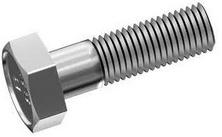 |
 |
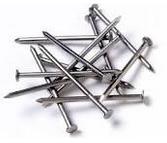 |
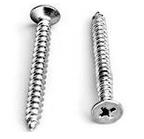 |
| bolts | nuts | nails | screws |
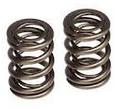 |
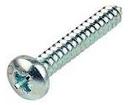 |
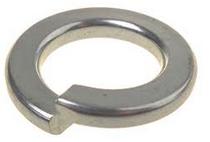 |
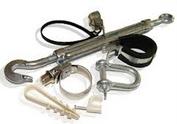 |
| springs | Screws | washer | fasteners |
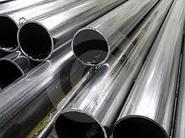 |
 |
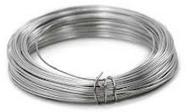 |
 |
| metal pipes | bearings | wire | self-tappers |
 |
 |
 |
 |
| logos, icons | car disks | hooks | motorcycle details |
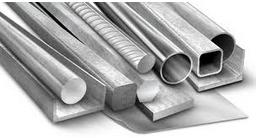 |
 |
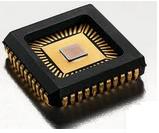 |
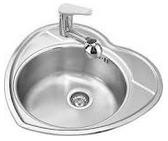 |
| metal profile | coins | PC hardware | sanitary engineering |
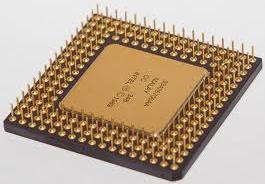 |
 |
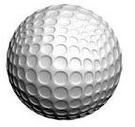 |
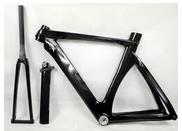 |
| electronic boards | steel buttons | golf balls | bicycle frames |
From the smallest electronic components to large structural elements, the applications are truly vast. It's safe to say that surface treatment is a critical enabler for countless industries.
Beyond Electroplating and Galvanizing: What Else is Out There?
While electroplating and galvanizing are incredibly important, the world of surface treatment is much broader. There are many other technologies out there, each with its own strengths and applications. Some similar and complementary technologies include:
-
Hot-Dip Galvanizing: Similar to electrolytic galvanizing in that it uses zinc, but hot-dip galvanizing involves immersing steel parts in molten zinc. This creates a much thicker and more robust zinc coating, ideal for heavy-duty applications like bridges, guardrails, and structural steel where maximum corrosion protection is needed. Hot-dip galvanizing generally provides superior corrosion resistance compared to electrolytic galvanizing, but the coating is typically less smooth and less decorative.
-
Electroless Plating: Unlike electroplating, electroless plating doesn't use an external electric current. Instead, it relies on chemical reactions in the plating bath to deposit metal onto the workpiece. Electroless plating is excellent for coating complex shapes and internal surfaces uniformly, and it can be used to deposit a variety of metals, including nickel and copper.
-
Anodizing: Primarily used for aluminum, anodizing is an electrochemical process that converts the metal surface into a decorative, durable, corrosion-resistant, anodic oxide finish. It's commonly used for architectural components, cookware, and various consumer products where a hard, attractive, and protective surface is required.
-
Powder Coating: This is a dry finishing process where finely ground particles of pigment and resin are electrostatically charged and sprayed onto a grounded workpiece. The powder adheres to the part and is then cured in an oven, creating a tough, durable, and often colorful finish. Powder coating is widely used for appliances, automotive parts, and architectural elements.
-
Painting and E-coating: Traditional painting is still a common surface treatment method, offering both decorative and protective properties. E-coating (electrophoretic coating) is a more advanced painting process that uses an electric current to deposit paint uniformly, offering excellent corrosion protection, especially in automotive applications.
These are just a few examples, and the field of surface treatment is constantly evolving with new technologies and processes being developed. The best choice of surface treatment method always depends on the specific application requirements, including the base material, desired properties, environmental conditions, and cost considerations.
My Final Thoughts After 30 Years in the Industry
Surface treatment is not just an afterthought; it's an integral part of manufacturing. It’s about enhancing the performance, extending the lifespan, and improving the aesthetics of metal products. From the everyday items we take for granted to critical industrial components, surface treatment technologies like electroplating and galvanizing play a vital, often unseen, role in our modern world.
As someone who has spent decades in this industry, I can tell you that understanding surface treatment is essential for anyone involved in product design, manufacturing, or procurement. It's an investment that pays off in terms of product quality, durability, and long-term value. And as technology continues to advance, I'm excited to see what new innovations and improvements the future holds for this critical field.

